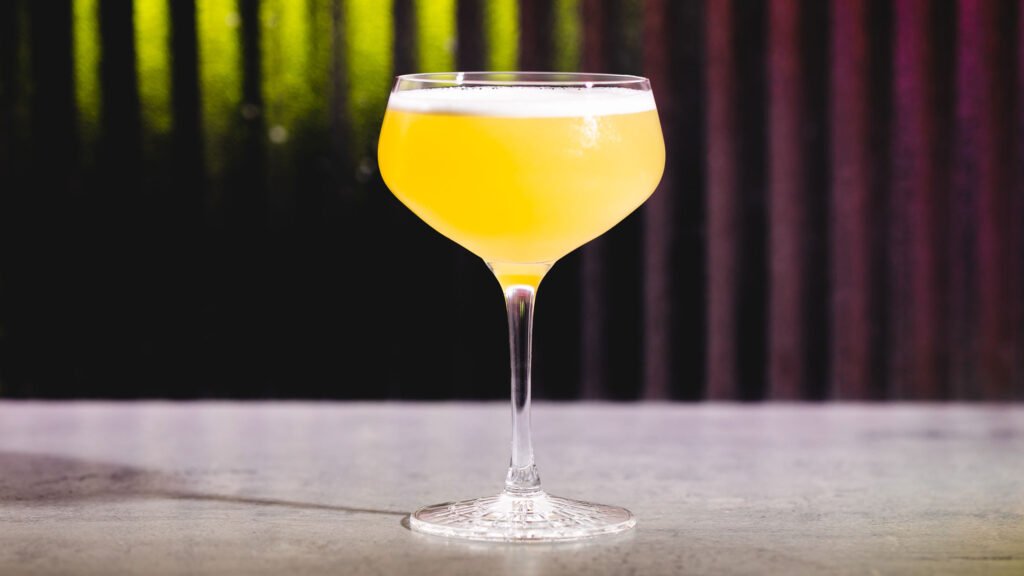[ad_1]
Once I was rising up, Mami France’s home was all the time effervescent with exercise through the vacation season. Cousins poured out of each room, chasing one another round as kompa performed within the background, the music overpowered solely by the uproarious laughter of the aunties and uncles gathered across the kitchen island sipping drinks. As a baby, I by no means cared a lot about Haiti’s culinary traditions across the holidays, cremas amongst them. However as I grew older, my curiosity changed into a deep appreciation for our edible historical past.
It wasn’t till my early 20s once I observed some older cousins gathered in a nook of the kitchen, whispering over a bottle full of a speckled, creamy liquid. On account of my mother and father divorcing once I was youthful, I spent most of my youth with my mother’s facet of the household. As such, there have been some pillars to my Haitian coming-of-age story that didn’t come till later, like my first style of the candy, spiced, and spiritous concoction referred to as cremas.
Batched yearly by a devoted auntie, this household recipe is such a carefully guarded secret that we marvel if it would even get handed down in her will. I requested certainly one of my aunties why the recipe is so tightly guarded and he or she posed this thought: In the identical method {that a} Southern household has a secret cornbread recipe, or an Italian grandma has a secret sauce, we now have cremas. For the unfamiliar, consider cremas as Haitian eggnog (sans eggs), although completely different islands within the Caribbean have their very own model of the vacation drink, akin to coquito in Puerto Rico. Whereas much less well-known than its counterparts, cremas is a cornerstone of Black beverage historical past within the Western hemisphere.
Translating Historical past
The official origin of cremas’ creation is unknown—a narrative just like that of many colonized nations looking for clues within the ashes of a tragic historical past. Whereas some individuals consider that the delivery of cremas got here across the first Haitian Independence Day on January 1, 1804, the creator of the drink and its unique recipe could also be endlessly misplaced in time. However whereas the historical past of cremas might need a number of holes, the present-day exploration of the drink because it pertains to Haitian tradition is ongoing.
“We all the time bought [cremas] immediately from Haiti,” says Gregory Gourdet, chef and founding father of lauded Haitian restaurant Kann and its basement bar Sousòl in Portland, Oregon. “Family members would deliver it over in recycled clairin bottles and we might put it aside for particular events and the vacations.” Emblematic of Haiti, clairin is a method of rum distilled with native cane sugar. The grassy spirit averages round 100 proof and sometimes makes its method into batches of cremas.
Cremas is a beverage that displays the worth of utilizing components readily readily available to make one thing scrumptious, in addition to traditionally and culturally essential.
Cremas is a beverage that displays the worth of utilizing components readily readily available to make one thing scrumptious, in addition to traditionally and culturally essential, explains Gourdet. Shelf-stable condensed and evaporated milks; coconut milk; basic Haitian spices like cinnamon, star anise, nutmeg, and vanilla; lime; and Haitian clairins are among the foundational components and flavors usually present in a bottle of cremas. Variations naturally come up in house recipes, relying on Haitian regionality and private style. “I like how family recipes differ, and people like us have modernized variations that may be dairy- or booze-free,” says Gourdet, who makes a non-dairy model utilizing coconut milk at Kann. Even ready-to-drink variations, like LS Cream Liqueur, have been hitting cabinets lately as Haitian People translate familial flavors to a contemporary market.
Whereas my circle of relatives recipe stays below lock-and-key, my tati Sandra did share with me that one of many secrets and techniques to cremas is the citrus. “The energetic ingredient in cremas is lemon or lime juice used to thicken it,” she says. “How a lot lemon juice you employ makes [cremas] thicker or thinner. And it does get thicker over time, so that you don’t wish to add an excessive amount of lemon juice to it.”
Batching Pleasure
Bertony Faustin, a first-generation Haitian American, is a history-making multi-hyphenate within the beverage trade. He additionally grew up on cremas. Whereas his mother and father didn’t drink alcohol all year long, his mom would make a particular batch of cremas through the vacation season. “I simply keep in mind this candy, creamy deliciousness, and Mothers would tease us with slightly style,” says Faustin. “She saved it within the fridge and took nightly pictures of it prefer it was some kind of magic elixir … Mothers had a candy tooth, so she all the time saved her personal hidden stash!”
Along with the normal beverage, Faustin has additionally created an array of cremas-infused snacks and desserts at his Oregon vineyard, Abbey Creek Winery, like cremas cheesecake, ice cream, and mini bundt muffins. His playfulness with cremas, and the experimentation with the beverage extra broadly, is a reminder that Haitian tradition is each complicated and joyful. “Whereas Haitian tradition has its unfair share of challenges and controversy, it nonetheless has a wealthy, nurturing basis of neighborhood and breaking bread. Cremas is simply the candy creamy cherry on high,” says Faustin.
Haiti is the world’s first freed Black republic, and Haitian beverage historical past is the start of impartial Black beverage historical past within the West. When our stunning and exploited nation was changed into the goal of harmful and insensitive feedback on nationwide levels, our shared culinary historical past—and the liberation that historical past holds—was additionally changed into a joke. To rejoice cremas is to rejoice the beginnings of Black individuals within the Americas and Caribbean writing their very own historical past, freed from colonial palms. That historical past additionally interprets into what we drink when it’s time to elevate our glasses.
Cremas
1 can (11 1/4 oz.) sweetened condensed coconut milk
1 can (13 oz.) unsweetened coconut milk
44 oz. coconut cream (unsweetened, not cream of coconut)
4 cinnamon sticks
7 star anise pods
3 tsp. vanilla extract
1 tsp. floor nutmeg
1 tsp. orgeat
1 cup granulated sugar
pinch of salt
8 oz. Haitian rum (Kann makes use of Rhum Barbancourt 4 Years)
Glass: snifter
Garnish: recent grated nutmeg, lime zest
In a big, heavy-bottomed saucepan over low warmth, add the evaporated coconut milk and common coconut milk, stirring to mix. Add the coconut cream and condensed coconut milk, stirring till mixed and fat have dissolved.
Add the sugar, cinnamon, star anise, nutmeg, vanilla extract, and orgeat. Stir till the sugar has fully dissolved. Proceed to cook dinner over low warmth for about 30 to 45 minutes, stirring usually as to not let the cremas burn; don’t deliver to a boil. Take away the combination from warmth and permit it to chill barely. Use a sieve to pressure out the spices. Enable the combination to chill within the fridge for no less than 4 to six, or ideally in a single day. Lastly, stir within the rum and switch to a sealable container, storing within the fridge for as much as 1 month.
Serving measurement is 5 oz.
Jason Calvanese and Gregory Gourdet, Kann Restaurant, Portland, Oregon
[ad_2]


